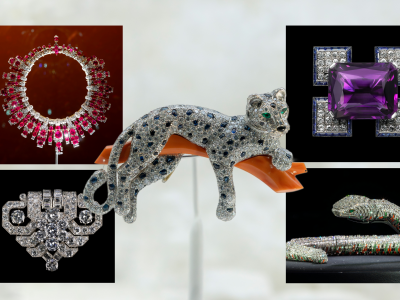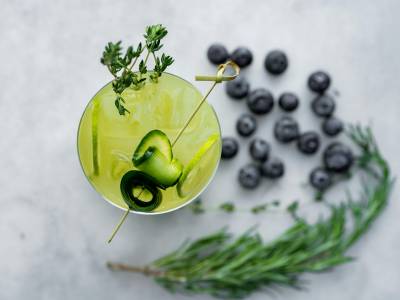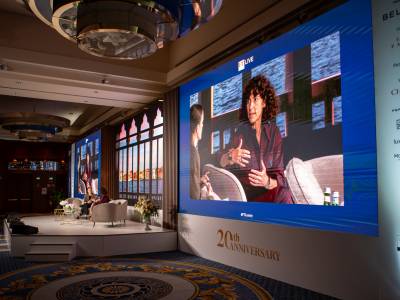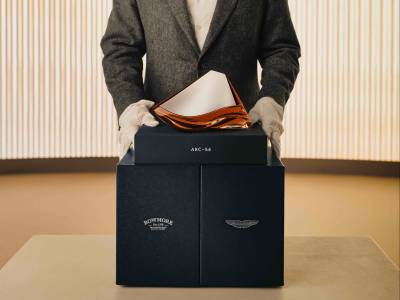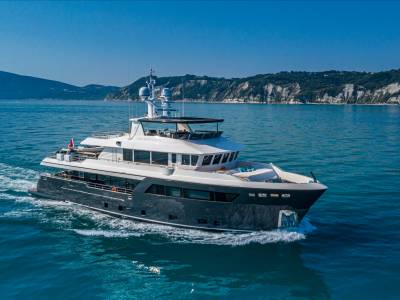Alexander Vik, the Norwegian serial entrepreneur, sometime financier and fervent patron of the arts, is the kind of man who appreciates a room with a view. There’s his New York pied-à-terre, an apartment high up in Manhattan’s Time Warner Center with horizon-to-horizon vistas across Central Park; the 19th-century building in Monaco, which houses one of his companies, Sebastian Holdings, and overlooks the sparkling waters of the Mediterranean; and his family home in Greenwich, Connecticut, an eight-bedroom mansion set in acres of luscious green woodland and built in 1930 by a member of the Rockefeller clan.
Alexander Vik uncovers the Latin American luxury market
21st March 2015
With reports that the Latin American luxury market is set to eclipse that of the Chinese, hotelier, winemaker and entrepreneur Alexander Vik has his finger firmly on the pulse of the future
But the real jewels in Vik’s property portfolio are his two properties in Uruguay and a vineyard in Chile, which have also become some of the world’s more avant-garde, high-luxury hotels. Estancia Vik is a vast red-and-white Colonial stronghold, surrounded by 4,000 acres of rolling countryside in the wilds of José Ignacio. Vik describes it as Marlborough country, with its cattle, waterfowl and polo field, which is frequented by the likes of Argentinian superstar Adolfo Cambiaso. Then there is Playa Vik, also in José Ignacio, the Estancia’s cool cousin, designed by Uruguayan architect Carlos Ott (who also designed the nearby airport in Punta del Este and the Opéra Bastille in Paris). Here, glass walls invite the eye to drink in the endless, unspoilt coastline, which stretches for miles in either direction. And finally there is Vina Vik. Speaking via a crackling Skype connection from his Chilean outpost, Vik confirms that, once again, the views are spectacular.
“It’s 75 degrees, brilliant sunshine, the conditions couldn’t be better.” Not that he will have much time to enjoy it. The vineyard finally opened for business this spring (the first vintage, a 2009 Bordeaux-style blend retailing at around US$100 a bottle, sold out through pre-orders), and he’s in situ for “four days this time, working”. Having become fascinated with the concept of terroir while training for a marathon in France, he set about assembling a crack team to find “the very best conditions to grow the best red grape” in South America.
The search led them to an area of Chile that Vik describes as a total wilderness. “We spent a year analysing the province, and from there it was a case of clearing the land.” Together with his wife Carrie, and working with Chilean architect Smiljan Radic, he has since designed and constructed a futuristic property on the land for the family (he has four children aged 14 to 26) and their guests. And again, it’s all about letting the outside in; floor-to-ceiling glass walls allow for 360-degree views of the vines, and it also houses a restaurant run by Uruguayan chef Marcelo Betancourt.
While Vik is most definitely a seasoned money man (he graduated from Harvard with a degree in economics in 1978), his heart is in the arts. Hands-on at every stage of the development of his three South American properties, a large part of his involvement has been working with local artists (as many as 50 in Uruguay and 40 in Chile) to produce the colourful and unusual installations that set his open houses apart. And in fitting with the sweeping landscapes they reflect, these are large-scale pieces. Pieces like Clever Lara’s 3,000sq ft Google Earth interpretation of the Uruguayan coastline that decorates one of the ceilings at Estancia Vik; Carlos Musso’s bold suite and “chapel”, also at the Estancia; and an art deco-inspired bronze door by Pablo Attchugarry that presides over the entrance at Playa Vik. “Every room has a specific installation, so it’s like living inside the art in a way you’ll rarely find elsewhere in the world,” explains Vik.
With some reports suggesting that the Latin American luxury market is set to eclipse China’s as growth slows in the East, Vik’s timing could be read as spot on—and he agrees. “It feels like the land of opportunity, open for innovation and ideas.” And yet he insists that these properties are nothing more than passion projects. “With everything I’m doing in South America, it has never been about the financial investment. I’m more interested in building and creating something very beautiful.” His choice to move into wine, a market that’s notoriously slow to show any returns, backs this up. “With the wine in particular, I simply wanted to create the best red wine in South America, to maximise the capabilities of this region from the soil up.”
But then the continent has always had a special place in Vik’s heart. His mother was born in Uruguay, the daughter of the country’s ambassador to Norway, where she travelled as a teenager and subsequently met Vik’s father. When Vik’s oldest daughter was born in 1987 he decided to make the pilgrimage to introduce his child to her great-grandmother. Eventually, he and Carrie bought a small beach house and began spending Christmases there, upgrading to the grand Estancia Vik in 2004, and simultaneously acquiring Playa Vik. The idea to open them up to paying guests came from necessity. “We were sitting there with these two pieces of property, but we lead a very Northern Hemisphere kind of life. We thought ‘What are we going to do? We can’t be here all the time’.”
The way he tells it, Vik was born with a head for business. “My father was a real estate entrepreneur himself, and he was very open to my involvement growing up. He always spoke to me about the projects he was involved in and encouraged me to take an interest.” Vik went to work on a farm as a young boy and describes his family’s move to the Canary Islands when he was just 14 as having “fostered a lot of independence at a young age. Being in a different culture, with a different language, encouraged that. It was a very different upbringing compared to staying in one town with the same people all your life.” His subsequent move to the US to study at Harvard brought another 360-degree change. A firm believer that “the quality of students is more important than the quality of professors,” he threw himself into university life as the charismatic captain of the golf team.
The college paper noted his confident, freewheeling style on the fairways: “Vik wielded a deadly putter throughout the afternoon, snaking home transcontinental putts and ramming in 10-footers with reckless abandon,” noted the Harvard Crimson in 1976, a precursor, perhaps, of his attitude to business. He was also ever-inventive when it came to raising funds for the team, selling aerial photographs of Harvard Stadium to inebriated alumni at football games in Boston.
After graduating, he went to work as a corporate analyst for Lehman Brothers, but he made his real money when the first internet bubble saw stocks in his fledging software firm Xcelera soar by over 11,000 per cent in 1999. The rest, as they say, is history, and his portfolio today includes various investment ventures, as well as the luxury Norwegian vodka brand, Christiana. Enter his passion for the arts, which also saw him open Sebastian & Barquet, a gallery in New York’s Chelsea, with business partner Ramis Barquet in 2005 (a London outpost followed in 2008). Specialising in 20th-century pieces that often lay at the crossroads between sculpture and functional object, the venture is very much a reflection of his personal tastes, and also incorporates a sister, open-to-the-public showroom on 26th Street which is laid out with a museum-like feel.
It’s obvious that he is actually happiest working with one of his artists in their studio, to bring his latest creative vision to life. “I love creating beautiful things,” he says, adding that he thinks his involvement with local artists has helped to create the unique experiences he believes today’s consumer of luxury travel is in pursuit of. He also likens the process to his dealings in business: “Whether I’m trying to design a room, or make a painting or a sculpture, it’s not that dissimilar to coming up with an idea for a new company, product or service.
The fundamental thought processes are similar.” He has forged firm friendships within the art community in South America, and his protégées will often stop by at the properties that house their colourful works for dinner, adding to the informal feel the Viks have tried to foster. And naturally, there have been several celebrity visitors, Michelle Obama’s favourite designer Jason Wu among them, while overall the properties attract an international mix of interesting people from all walks of life. Vik has also been pleased to note that roughly a third of guests are South American. “Brazilians and a fair amount of Argentinians, Chileans and people from Paraguay,” all enjoying the fruits of their continent’s booming economy. “It proves to me that we are still offering a distinctive experience they can’t get elsewhere,” says Vik, with obvious satisfaction.
As far as South America’s rise as a player on the global stage, Vik believes it’s a matter of time. “The world is full of beautiful places, but you’ll have more of an adventure here. There is still a sense of wilderness. The world is shrinking rapidly and cultures are merging, but here you can still find something totally unique.”







